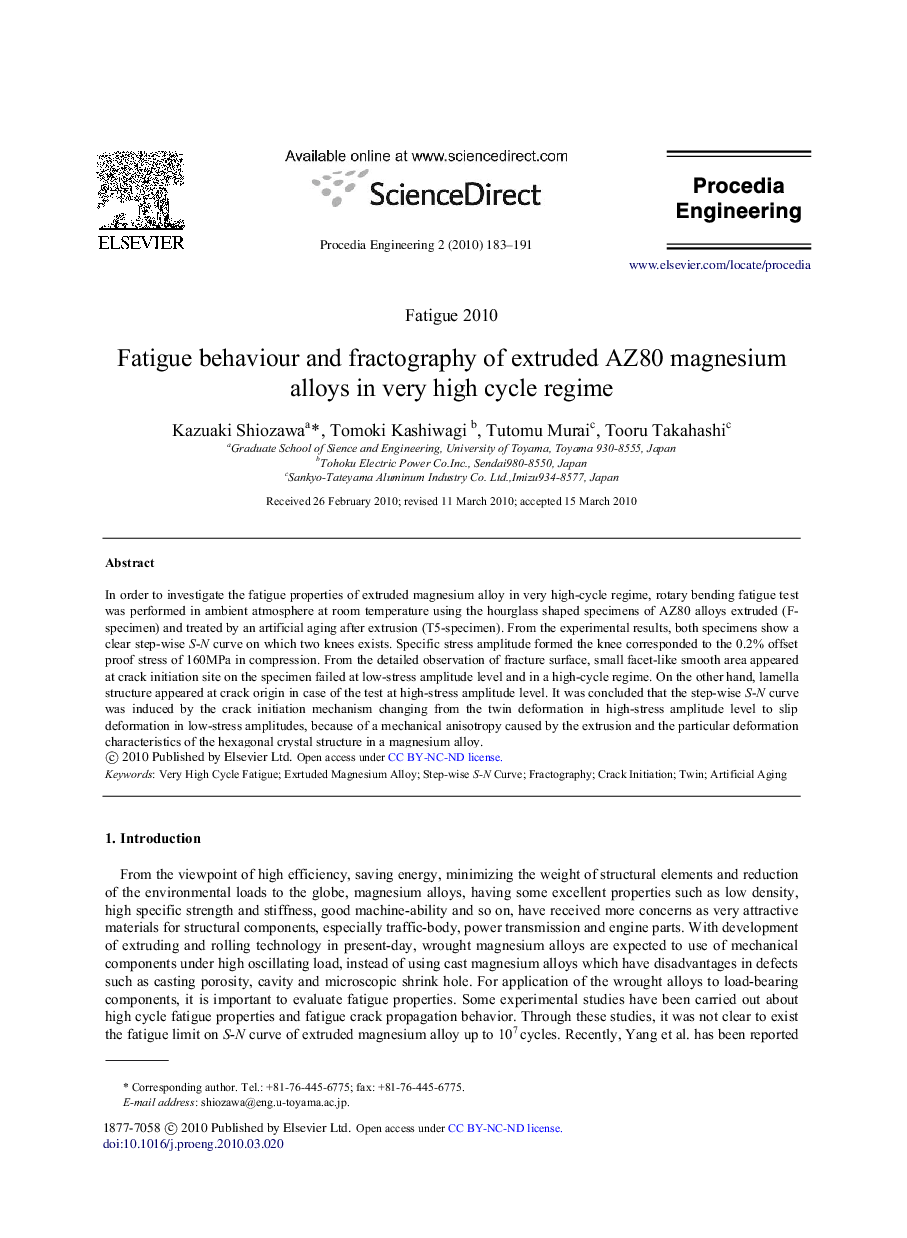| Article ID | Journal | Published Year | Pages | File Type |
|---|---|---|---|---|
| 864607 | Procedia Engineering | 2010 | 9 Pages |
In order to investigate the fatigue properties of extruded magnesium alloy in very high-cycle regime, rotary bending fatigue test was performed in ambient atmosphere at room temperature using the hourglass shaped specimens of AZ80 alloys extruded (Fspecimen) and treated by an artificial aging after extrusion (T5-specimen). From the experimental results, both specimens show a clear step-wise S–N curve on which two knees exists. Specific stress amplitude formed the knee corresponded to the 0.2% offset proof stress of 160 MPa in compression. From the detailed observation of fracture surface, small facet-like smooth area appeared at crack initiation site on the specimen failed at low-stress amplitude level and in a high-cycle regime. On the other hand, lamella structure appeared at crack origin in case of the test at high-stress amplitude level. It was concluded that the step-wise S–N curve was induced by the crack initiation mechanism changing from the twin deformation in high-stress amplitude level to slip deformation in low-stress amplitudes, because of a mechanical anisotropy caused by the extrusion and the particular deformation characteristics of the hexagonal crystal structure in a magnesium alloy.
